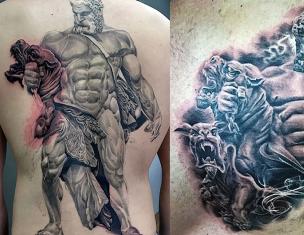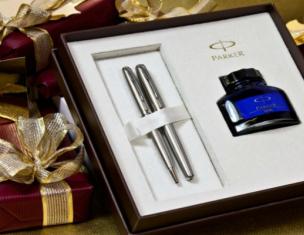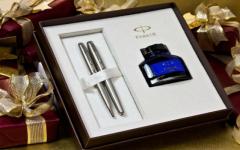Pediatricians recommend disinfecting bottles and pacifiers for at least the first three months of a baby’s life. At this time, the baby’s immunity is too weak, so an infection can easily enter the body and cause a serious illness. To avoid this, children's dishes should be thoroughly washed, cleaned and sterilized.
After three to four months, the child’s body adapts to new conditions, and the body becomes stronger. Therefore, at this age, after washing, the dishes can not be sterilized, but simply doused with boiling water. In this article we will take a closer look at how to properly sterilize baby pacifiers and bottles.
Sterilization methods
- The most common and accessible method for everyone is boiling. In this case, place the bottles washed in the sink into a container of boiling water and leave for 7-10 minutes. After which the dishes are removed and placed on a clean, dry towel. Sterilization of nipples takes place in the same way in a separate pan or other container;
- Modern parents often use a microwave oven for sterilization. This is a quick, easy and practical method in which the dishes are placed in a container, filled with water and closed tightly with a lid. Then put in the microwave for 5-6 minutes;
- For cold sterilization, special antiseptic tablets are used. Such products are distinguished by a high degree of disinfection and ease of use. They reliably and efficiently eliminate harmful bacteria and preserve the appearance of products, whereas they can deteriorate when boiled or sterilized in the microwave. To prepare the solution, one tablet is dissolved in cold water in which the baby’s dishes are placed and left under a closed lid for at least 30 minutes;
- Steamer and multicooker - another one modern method processing and sterilization. Water is poured into the lower compartment of the steamer, where the bottles are placed upside down. The nipples are retracted into the upper part of the device. The dishes are sterilized using the “Cooking” mode for about ten minutes. To process dishes in a multicooker, place the items on a wire rack, pour a liter of water into the machine’s container and leave for ten minutes in the “Steam” mode;
- Today, manufacturers offer an electric steam sterilizer, which is designed specifically for sterilization, disinfection and disinfection of dishes and other items. The products are placed in the device, filled with water and the desired mode is selected. The process takes about ten minutes, and the device can accommodate up to six products at a time.

It is very convenient to clean bottles with a special brush or brush with long handle. They will help clean out any remaining food inside the container. Today, many manufacturers of baby dishes produce brushes, plastic and glass bottles, silicone and latex nipples, as well as the first real dishes for babies. Popular brands include Avent, Bebe Confort, NUBY, Nuk, Medela and others.
After washing, rinse each item thoroughly in running water and dry it by placing it on a clean, dry towel. Bottles and containers are placed bottom up. Don't dry the dishes! Let it dry on its own both after washing and after sterile processing.
Pediatricians recommend sterilizing nipples and bottles after each feeding and before first use. These items must be disinfected separately. After three to four months, the dishes can no longer be sterilized, but simply doused with boiling water after washing.

How to sterilize bottles
Remember that not every bottle can be boiled multiple times. For example, plastic becomes deformed after several similar procedures. Damaged, leaking bottles can no longer be used! However, many still choose tableware made from food-grade plastic, as it is convenient and safe. Plastic objects do not break and are light in weight. For sterilization plastic dishes choose cold method using antiseptic tablets. Then the products will last a long time.
Glassware can be sterilized many times, including using boiling water. Glass bottles last longer. The products are easy and convenient to wash, but they weigh more. Therefore, it will be difficult for the child to hold the glassware. But such products break easily and can injure the baby. Read more about how and which bottle to choose for a newborn.
Regardless of the type, the container must be airtight and safe for the baby. Wash bottles immediately after feeding and do not wipe the container with a towel or napkins, but dry it naturally. Store children's dishes separately from adults and use them only for children!
How to sterilize nipples
Nipples are sterilized using the same methods as bottles, but always separately. In addition, the process takes two to three minutes. In a double boiler, the products are placed separately in the upper compartment of the device. Sterilization is also carried out using traditional boiling in a saucepan, microwave, slow cooker, special sterilizer or cold method.

When using pacifiers, wash the products regularly and check for integrity, especially after hot sterilization. Over time, the material may burst or crack. Before first use, the pacifier is washed in soapy water and then sterilized. The easiest method is to put it in boiling water for two to three minutes.
The rules for caring for newborns are adamant: in the first months of life, the child must live in an environment close to sterile. For example, baby pacifiers should not be reused, licked by an adult, or given to a baby if it has fallen on the floor. They must be sterilized before use. And there are quite a few ways to do this.
Photo by Shutterstock
The requirement to sterilize baby nipples is not without meaning. After all, there are a lot of bacteria on the floor, sofas and other surfaces, many of which are pathogenic (and the quality of cleaning has nothing to do with it). The baby’s immune system is not yet ready to resist all these microbes. Therefore, it is worth helping the baby gradually adapt. This means that it is worth actively sterilizing nipples while the baby is still in the crib.
How to sterilize nipples
The simplest method of sterilization, which is available to every person, be it a man, a woman or grandparents. To sterilize the pacifier, fill a small saucepan with water and place it on the fire. When it boils, place the nipple in it and boil for a couple of minutes. That's it, the pacifier is disinfected.
Do not be afraid that the pacifier will not withstand such high temperatures. Pacifiers are made from materials that are designed specifically for sterilization and boiling
You can save time by using a steamer to sterilize your pacifier. Pour water into the lower part, place the pacifier on one of the levels and turn on the device for 2-3 minutes. The steam will quickly make the nipple sterile.
Alternatively, you can treat nipples in a special bottle sterilizer. In such devices, pacifiers are disinfected under an ultraviolet lamp. This method, on the one hand, is more convenient because you don’t need to bother with water - pouring, pouring out, drying the device. On the other hand, the ultraviolet lamp also has an additional bactericidal effect.
If you need a pacifier urgently or you just don’t really want to bother with all the sterilization structures, you can simply turn on the kettle, wait for it to boil, and hold the pacifier over the steam.
Experts say that this method is not 100% protection against germs. However, sterilizing the pacifier this way is better than not sterilizing it at all.
There is also the option of sterilizing the pacifier in the microwave. But it is not suitable for every type of pacifier. Therefore, be sure to read the information on the packaging so as not to accidentally put something in the microwave that is not intended for it. Otherwise, you risk getting an extremely unexpected result.
What to consider when sterilizing nipples
For newborn babies, they usually buy new pacifiers (rather than use the ones they inherited). They are usually either rubber or plastic. Remember that you can sterilize rubber ones in any way convenient for you. But with plastic ones it’s more complicated. Not all methods can be applied to them. It is better to consult with sellers or representatives of the manufacturer about which sterilization methods are suitable for such nipples.
Before first use, be sure to prepare the pacifier. Preparation includes washing the pacifier in a soapy solution followed by sterilization according to all the rules. And this cannot be delayed.
The main question that young mothers have is how long should they ideally boil the pacifier and whether 2-3 minutes is not enough. Experts assure that this time will be quite enough. The bacteria are not viable enough to last even a minute.
How many mothers feel that this process of nipple sterilization will continue endlessly. However, in reality, everything, including this, passes quite quickly. And even the warmest memories of these endless boils remain afterwards.
How to boil a pacifier? This is necessary because many bacteria accumulate on baby bottles and nipples, which can cause internal disorders. There are several options how to sterilize a pacifier. Let's consider the simplest of them - boiling.
Is it necessary to boil a pacifier, and how to do it correctly?
Before directly boiling, the pacifier must be thoroughly washed, the hole blown out and rinsed. The baby bottle should initially be completely disassembled and washed thoroughly under warm running water. All these devices need to be washed with antibacterial or simple detergent using special small brushes. Then put everything in an enamel container and fill it to the top with water. Wait for the water to boil. Then a reasonable question arises: how long to boil a pacifier. The answer is - boil for about 15 - 20 minutes. When the specified time has passed, drain the water, holding the accessories with the lid. Once they have cooled down, you can use them. Please note that the effect of sterilization lasts for half an hour, and therefore it is preferable to feed during this period. It is recommended to use enamel containers, since they form the least amount of limescale, which subsequently settles on the stomach walls and other organs of the baby. If you don’t have such utensils in your kitchen arsenal, you can take an old saucepan, since with frequent use this deposit settles faster and is easy to notice. To get rid of plaque, use exclusively filtered water, or install the filter directly on the tap. This will protect not only your little one, but the whole family. By the way, there is quick option To sterilize pacifiers, you can simply pour boiling water over them and then give them to your baby. It is not advisable to boil latex nipples, since under the influence of temperatures they can become deformed or fused.How often should pacifiers and bottles be sterilized?
 I think you understand how to boil a pacifier and bottle, now we need to tell you how often this process should be repeated. If you feed your baby only artificial formulas, then the bottle should be boiled before and after each feeding, this will provide the baby with maximum protection from harmful bacteria that disrupt the microflora and provoke infectious diseases such as dysentery. Often, leftover food is a favorable environment for the active reproduction of viruses and bacteria. If you do not sterilize the bottle in time, then at the next meal they will all enter the child’s body. Because of this, the baby may develop diarrhea, serious intestinal disorders, etc. It is necessary to sterilize dishes for at least one year, or until the baby refuses the bottle. Over time, the child’s body will begin to produce immune cells that will independently fight microbes that cause an imbalance in the internal microflora.
I think you understand how to boil a pacifier and bottle, now we need to tell you how often this process should be repeated. If you feed your baby only artificial formulas, then the bottle should be boiled before and after each feeding, this will provide the baby with maximum protection from harmful bacteria that disrupt the microflora and provoke infectious diseases such as dysentery. Often, leftover food is a favorable environment for the active reproduction of viruses and bacteria. If you do not sterilize the bottle in time, then at the next meal they will all enter the child’s body. Because of this, the baby may develop diarrhea, serious intestinal disorders, etc. It is necessary to sterilize dishes for at least one year, or until the baby refuses the bottle. Over time, the child’s body will begin to produce immune cells that will independently fight microbes that cause an imbalance in the internal microflora. Why do you need to sterilize baby equipment?
A child’s body develops and improves over the course of one to two years, and therefore it is extremely susceptible to various diseases, including infectious ones. If you do not follow the basic rules of sterilization, this can result in serious illnesses, food poisoning with severe symptoms (nausea, severe vomiting, abnormal stool, high temperature and so on). To restore the child’s health, he will have to be admitted to the hospital. Any mother is unlikely to want this, and therefore it is better to be safe.Every mother strives to create the most best conditions accommodation. And caring for the baby plays a big role in this, since he is not yet able to care for himself. Immediately after birth, the baby needs many items that not only allow him to develop and grow faster, but also significantly facilitate the everyday life of his parents. One of these items is a pacifier, which you not only need to choose correctly. It is also very important to know how to sterilize a pacifier. This is exactly what we will deal with in this article.
Do I need to sterilize my pacifier?
The question of how to sterilize pacifiers arises more often today than just a few years ago. And this is due, first of all, to the fact that modern technical capabilities are much richer than a couple of decades ago. In every home today you can find many household appliances, which can be used not only for the purpose specified by the manufacturer, but also for other purposes. And that is why the question arises, how to sterilize a pacifier, and what can be used for this. 
But before you decide exactly how to do this, you need to understand how important sterilization is. In this regard, the following facts are beyond doubt:
- Newborn babies have very weak immunity and are susceptible to attacks from any viruses and harmful bacteria. And there are a lot of them in our everyday life. That is why it is necessary to sterilize the baby’s pacifier every time until at least 3 months, preferably up to 6. Next, just new nipples before the first use.
- New, just purchased, pacifiers were subjected to long-term storage and transportation to different retail outlets. As a result of this, a huge amount of bacteria, dirt definitely accumulates on them, and if they are not in sealed packaging, various chemicals settle on the surface of latex or silicone. Therefore, you need to know how to sterilize a pacifier before using it for the first time, and be sure to do it.
Sterilization methods
Depending on how much time you have available, you can use quick ones or longer ones, but effective ways. And one more factor that influences the choice of sterilization is the willingness to subject the child’s pacifier to treatment using modern technology, the safety of which has not been proven, as well as its danger.
Boiling
Boiling is the most safe way, which, in principle, will not require you to spend a significant amount of time. This is the method our mothers and grandmothers used to sterilize nipples and pacifiers.
The sequence of your actions in this case will be as follows:
- Fill an enamel quart cup or small saucepan with water. You don’t need a lot—up to 0.5 liters is enough.
- Bring the water to a boil.
- Place a pacifier or pacifier in it.
- Boil for a few minutes - 3-5, on the lowest heat.
- Remove and place on a clean towel to dry. It is advisable to cover the products with it.
Important! The only caveat of using this technology is the accelerated wear of latex after heat treatment. Regarding silicone, it is better to check with the seller whether this method can be used for the product you have chosen.
Steaming - when time is short
Steam sterilization does not give a 100% result, but it is suitable if the child is already screaming and requires food or a pacifier to fall asleep, and you do not have another pacifier.
To sterilize a pacifier this way:
- Boil water in a kettle - it is not necessary to fill it full. Even a small amount of water inside will do.
- Take the product with tweezers.
- Hold the steam over the steam until it covers the pacifier or pacifier on all sides.
Important! 1-2 minutes of such treatment is enough for the product to be suitable for use and relatively safe for the baby.
Steamer - a modern solution
Using a steamer for sterilization is very beneficial from the point of view of saving time and obtaining a guaranteed result, because this technique produces exactly what is needed to neutralize pathogenic microorganisms - hot steam.
In order to sterilize a pacifier or pacifier before the first or subsequent use, you must:
- Pour water into the lower compartment of the device.
- Place the necessary items on one of the levels.
- Set the timer for 2-3 minutes.
- Turn on the device and wait for the cycle to complete.

Important! Since the steamer operates from the mains, please note that energy consumption in the apartment will increase as the steamer is used to sterilize pacifiers and nipples. More precisely, it directly depends on the frequency of use of this method.
Microwave oven - is it worth sterilizing nipples using this method?
There are many opinions regarding the use of microwaves not only for sterilizing everyday items for newborns, but even for preparing food for adults. Some of them focus on the fact that there is no proven negative impact on human health when consuming products after such processing. Others argue that the electromagnetic field is still unsafe. Therefore, whether to use a microwave oven to sterilize the pacifier at home or not is up to you.
If you intend to make your daily work of caring for a baby easier in this way, proceed this way:
- Check with the manufacturer or seller whether the product you are purchasing can be treated with such an effect.
- Place pacifiers and pacifiers in a microwave-safe container.
- Pour a small amount of water there.
- Cover with a lid.
- Set the timer for 3-5 minutes.
- Remove sterilized items and dry.
Sterilization using special equipment
The modern market provides a wide selection of not only clothing, cosmetics, but also all kinds of devices for caring for newborns. One of these is a special sterilizer, with which you can make not only pacifiers and nipples, but also all bottles absolutely safe for your baby. The use of such household appliances does not cause any difficulties - just follow the instructions from the manufacturer.
Important! The only drawback that can be noted with this solution is the additional cash costs, because the unit will not be so cheap. But the safety of your child and saving your personal time are sometimes worth purchasing such a valuable device for the home. Especially if you do not plan to stop at 1 child, but are thinking about further continuation of your family.
- Even if you regularly sterilize your pacifiers, do not exceed the recommended period of use. Replace pacifiers and nipples as they wear out.
- Do not use care products of unknown origin on your newborn. Buy only certified products from reputable manufacturers.
- Maintain your baby's hygiene rules by not being lazy and performing the necessary daily procedures. This is the only way you can protect him from most diseases and enjoy communication with a healthy and happy child.
Video material
We hope that after reading the information in this article, you were able to make a decision for yourself on how to sterilize nipples for a newborn. Now you will spend exactly as much time on this as you expected, but hopefully not at the expense of the quality of the process and the final effect. We wish you and your beloved baby health!









